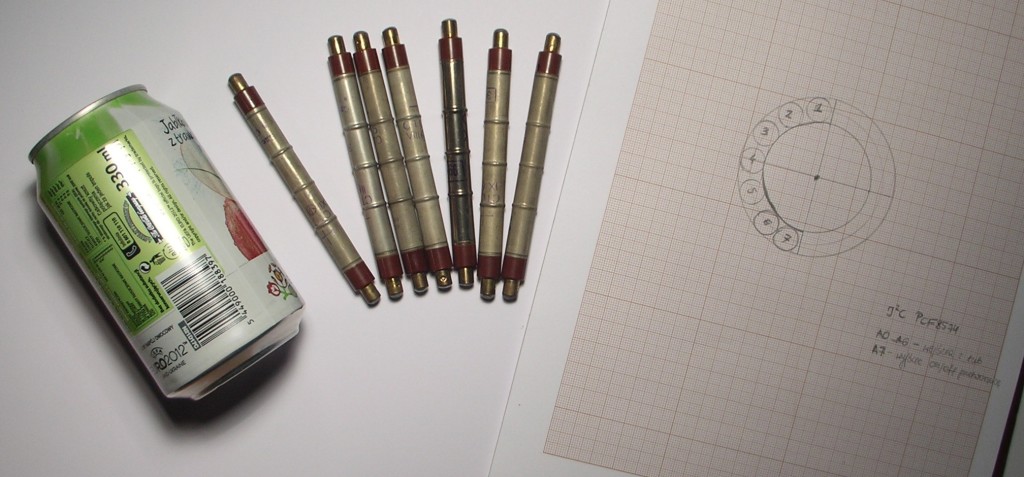The radiation sensor
We’ve just obtained 7 Soviet STS-5 Geiger tubes. They are mainly susceptible to hard beta and gamma rays, and can be used to measure their levels. However, due to the presence of a metal shield, the tubes can’t measure the level of alpha radiation; thankfully, in most cases it isn’t dangerous for humans.
Tubes’ parameters:
- Starting voltage = 280…330 V
- Advised working voltage = 360…440 V
- Plateau length = at least 80 V
- Plateau slope = 0,125% / 1 V
- Maximum natural background = 27 pulses / min
- Load resistance = 5…10 MΩ
- Allowable stray capacitance of input circuits = 10 pF
- Transit capacitor = 7…10 pF
- Allowable surround temperature: -40 … +50 °C
- Weight: 6,2 g
source: gstube.com/own
The tubes are calibrated in μSv/h, probably using a 137-Cs radiation source. However, the calibration is very inaccurate, and it cannot be used for the entire range of particle energies. It is the main disadvantage of Geiger tubes.
STS-5 tubes are designed to measure particles with frequency from 0.35Hz up to 3.6kHz, dead time is at least 190 μs. Tubes can measure radiation levels from 0.14 μSv/h to 1440 μSv/h. Average outdoor background radiation in Andrychów is about 0.15 μSv/h, in Cracow about 0.21 μS/h.
High Voltage Power Supply
Geiger tubes need about 400 V DC power supply. We’ll build a boost converter from low voltage from batteries to 400 V. Due to limited amount of space in the can the boost converter must be tiny.
Tubes and boost converter must be galvanically separated from other electronic parts, as condensed vapor or high level of humidity may prove very dangerous…
The circuit of similar boost converter and amplifier is presented below, as our final circuit isn’t ready yet.
The Sensor
Our radiation sensor is going to include seven STS-5 tubes. We predict that the maximum count from one tube during the flight will be about 126, so the uncertainty of measurement is 8.7%. If we use 7 tubes, uncertainty of measurement drops to 3.4%. The tubes will be connected to a PCF8574 I/O integrated circuit, and the sensor will be connected to the microprocessor via I2C bus. Data from Geiger tubes will be displayed in real time in dedicated software.

